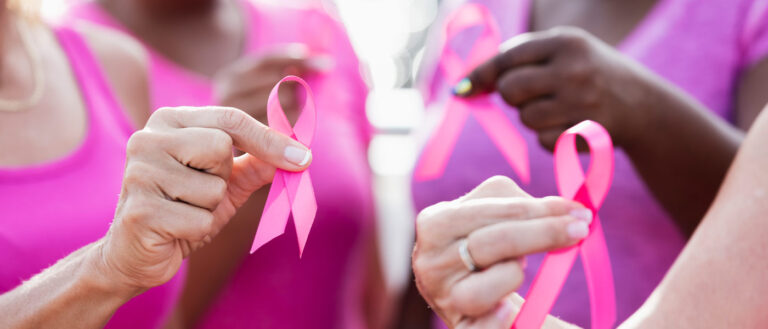In October, pink ribbons become a common sight as organizations promote breast cancer awareness. The goal of these efforts is to encourage those at risk of developing the disease to get mammograms in hopes of catching potential diagnoses early, when treatment is most effective.
But despite efforts at raising awareness, sentiments in society about breast cancer can be misguided at best—and potentially even harmful. We spoke with Alberto Montero, professor at Case Western Reserve University School of Medicine, to debunk some common breast cancer misconceptions.
Montero is director of the breast cancer program at University Hospitals Seidman Cancer Center. By understanding the way the immune system and breast cancer interact, he aims to develop novel immune-based treatments or predictive tests for which patients may respond well to immunotherapy.
Read about some of the more common myths about breast cancer that Montero thinks need to be busted.
Myth 1: Finding a lump in your breast always means cancer.
If you feel a mass in your breast, you should ask your doctor about it, but it is important to know that not all lumps or masses mean cancer. It is normal for some women to feel cysts in their breasts that might vary with menstruation.
Also, many times breast cancer can be detected even before someone is able to feel a mass, which is why it is important to get mammograms. In general, the earlier breast cancer is detected, the better the prognosis is. A small tumor found on a mammogram that isn’t felt on an exam is more likely to be a very early stage cancer that is going to be more highly curable than one when someone is diagnosed with breast cancer after feeling a mass in their breast or under their arm.
Myth 2: Men can’t get breast cancer—it only occurs in women.
While male breast cancer represents only about 1% of all breast cancer cases, men can get breast cancer. Usually (but not always) it is because of a hereditary genetic mutation in the BRCA gene, which is the most common cause of hereditary breast cancer.
Myth 3: Antiperspirants, bras, hair dyes, dairy and cell phone use all cause breast cancer.
It is only human nature to try to make connections and try to understand why breast cancer (or another cancer) happened. So the internet is filled with inaccurate information that links the above with breast cancer, but the most current epidemiologic studies have not found any evidence linking any of these things with breast cancer.
Ninety percent of the time we don’t know what caused someone to get breast cancer. Genetic causes are a factor for about 10% of all patients (the minority of cases).
There are many risk factors for getting breast cancer, but a risk factor just increases a person’s risk of getting breast cancer, it doesn’t mean that they will get breast cancer. For example, we know that if you have a first-degree relative (parent or sibling) with breast cancer, your risk is higher. Other risk factors include obesity, early onset of periods, late onset of menopause, dense breasts, use of hormone replacement therapy (not oral contraceptives), prior breast biopsy with diagnosis of hyperplasia or lobular carcinoma in situ.
Myth 4: Breast cancer is cured if it doesn’t return after five years.
Breast cancer is really at least three different diseases that behave very differently. The most common is estrogen receptor positive breast cancer, which occurs in about 50 to 60% of patients and can recur 10-plus years later. The other two kinds of breast cancer (HER2+, about 20%; and triple negative breast cancer about 20 to 25%) most often recur in the first two to three years and [if] by year five, it doesn’t recur, it very rarely [ever] recurs.
Myth 5: We are never going to cure breast cancer or other cancers because it seems as if no progress has been made; people are still dying of cancers.
I hear very often people saying that it seems like we’ve made no progress in cancer in general or breast cancer specifically. But there has been great progress in the early detection of breast cancer and in the treatment of breast cancer over the last 50 years, which is why the most recent statistics from the American Cancer Society showed that for breast cancer, and many other cancers, the cancer death rate continues to drop steadily.
There are cancers where little, if any, progress has been made due to the complexities of the biology and that they are typically diagnosed when it is already too advanced (pancreatic cancer is an example of this). But, remarkable progress has been made in breast cancer.
It is also important to note that prevention is hugely important, and recent statistics from a recently published study estimate that about half of all cancers diagnosed worldwide are potentially preventable: “Nearly 50% of cancer deaths worldwide are caused by preventable risk factors, such as smoking and drinking alcohol, according to the largest study of the link between cancer burden and risk factors.”

